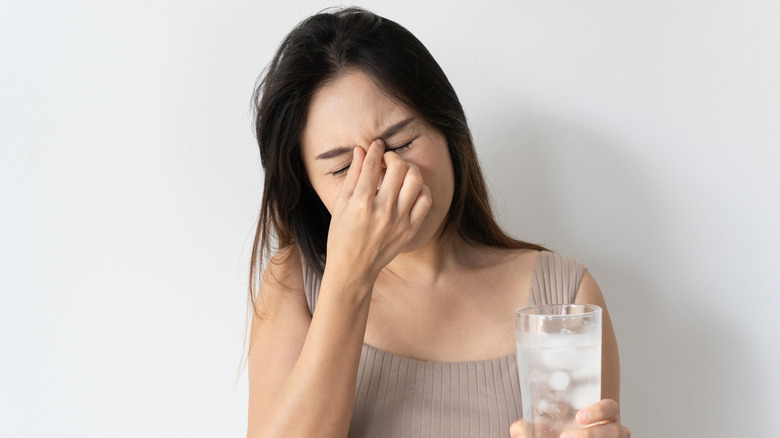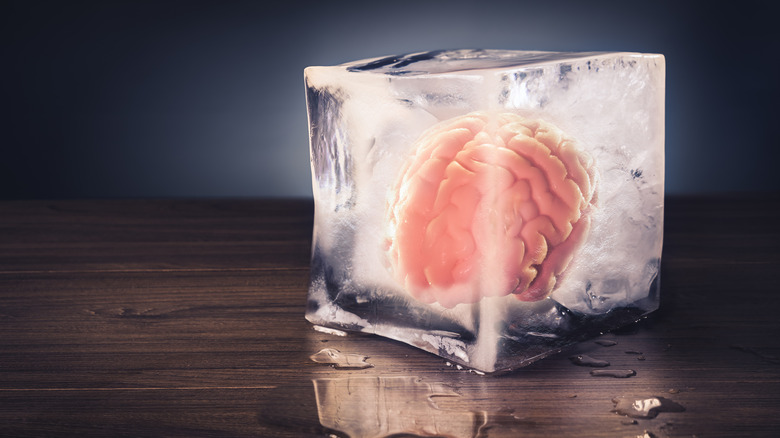The Simple Trick To Curing Your Brain Freeze In Seconds
Brain freeze happens suddenly and is over very quickly. But even though it's short-lived, it's remarkably painful. Also known as "ice cream headache," this unpleasant sensation occurs when we consume food or drink that's too cold too quickly, and despite being surprisingly painful, it isn't dangerous. Still, we'd all rather not experience the phenomenon of brain freeze (or sphenopalatine ganglioneuralgia as it's technically known), which remains somewhat mysterious.
There are several theories about what causes brain freeze but the most likely explanation is that cold food or drink prompts the blood vessels in the back of your throat and the roof of your mouth (or palate) to constrict due to the temperature drop. Our brains are responsible for maintaining specific temperature ranges in different parts of our body, and our head is one of the most important examples. So, when we experience a sudden drop in temperature and the blood vessels in the roof of our mouths constrict, brain arteries actually dilate, growing larger in order to try to warm up our head.
Experts believe that the rapid expansion of brain arteries triggers a type of nerve known as the trigeminal nerve, which sends signals between your brain and face and is involved in migraine attacks. It's this which is thought to lead to the short-lived headache we identify with brain freeze. Essentially, the body is telling the brain to pay attention to this sudden temperature drop in our heads and try to fix it as soon as possible.
So, how can we avoid brain freeze and are there any ways to stop it once it starts? As it turns out, the answer to both those questions is "yes," and there's actually a trick to cure brain freeze in seconds.
The trick to quickly stopping brain freeze
One extremely effective way of ending brain freeze is to make sure it never happens in the first place. It's all about keeping things warm, so in order to prevent those alarmingly painful cold headaches, it's advisable to take smaller bites of cold food or smaller sips of cold drinks. It also helps if you take longer pauses between each bite or sip, as it allows the roof of your mouth to recover before another shot of cold arrives and drops the temperature further. Another preventative measure is holding the food or drink in the front of your mouth for a brief moment before swallowing, which allows it to warm up before it hits the palate and the back of your throat.
Of course, taking your time between bites of ice cream is often easier said than done. So, if you do suddenly find yourself struck by brain freeze, there's a quick and easy solution. After removing whatever cold food or drink you're eating from your mouth, you'll want to warm your palate as quickly as possible, which can be done by pressing your tongue or thumb against it. If you happen to have a warm drink nearby, that will help, too. But if not, a quick thumb or tongue press should get rid of your brain freeze in seconds.

